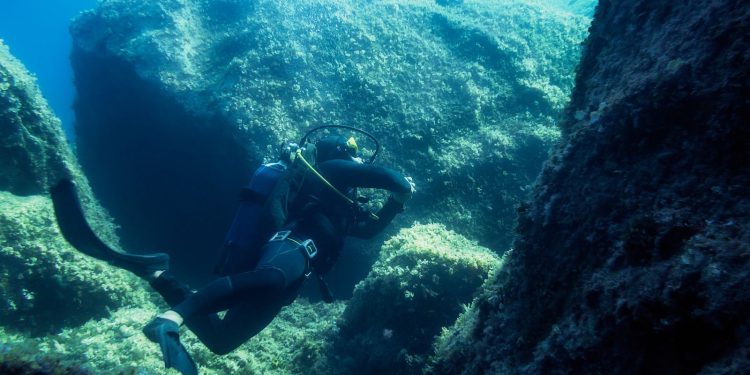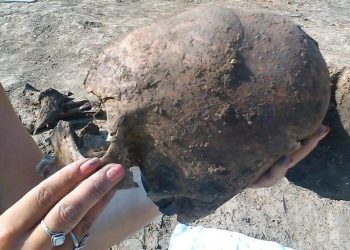A remarkable archaeological find has emerged from the depths of Lake Bolsena in Aiola, Italy, where divers uncovered a 3,000-year-old clay statue bearing the fingerprints of its ancient creator. The discovery was made at the Gran Carro di Bolsena, an underwater archaeological site that was once part of a stilted Iron Age settlement. The figurine, estimated to date back to the 9th or 10th century BC, is believed to have had ritualistic significance. Despite its unfinished appearance, this small, female-shaped statue offers invaluable insights into life in Italy during the Iron Age. Archaeologists hope that this rudimentary artifact will shed light on the cultural practices and daily life of the period. The clay statue, small enough to fit in the palm of your hand, is particularly notable for the well-preserved fingerprints of its maker, visible even after millennia underwater. Additionally, the imprint of fabric beneath the statue’s chest suggests that it may have once been adorned or “dressed,” further hinting at its possible ceremonial use.
While such figurines are often associated with funerary contexts, the location of this find within what was once a residential area has led experts to speculate that it could have been used in domestic rituals. Whether it served as a household object or was part of a larger spiritual practice within the community remains a topic of ongoing research.
https://www.facebook.com/SoprArcheologia/posts/pfbid0ekWc4iPdTdpsnBzTFAcoWmmGDqPEVr87d12GoWgmKXS7Ye4GxyxTdL2qKaNVxfPl
The discovery and preservation of the figurine were made possible by the collaborative efforts of the Underwater Archaeology Service and the Italian Cultural Property Restoration team, who worked alongside government divers to bring this ancient artifact to the surface. Gran Carro di Bolsena, a site rich in volcanic history, has only recently begun to reveal its secrets. The area’s archaeological significance was not fully recognized until 1991, when researchers linked the site’s rock formations to the presence of hot thermal springs. These springs, which emit gas and minerals at temperatures up to 40°C, played a crucial role in shaping the environment of the early Iron Age settlement.
In 2020, further exploration uncovered a mound of earth beneath the stones, leading experts to conclude that Aiola was an active part of a stilt-house village during the early Iron Age. Additional finds, including coins and pottery from the Constantinian era, indicate that the site was inhabited well into the later periods of the Roman Empire. The Aiola region, with its ongoing archaeological discoveries, continues to offer glimpses into its ancient past. With its preserved fingerprints, this clay figurine serves as a tangible link to the lives and rituals of a civilization that thrived thousands of years ago.











